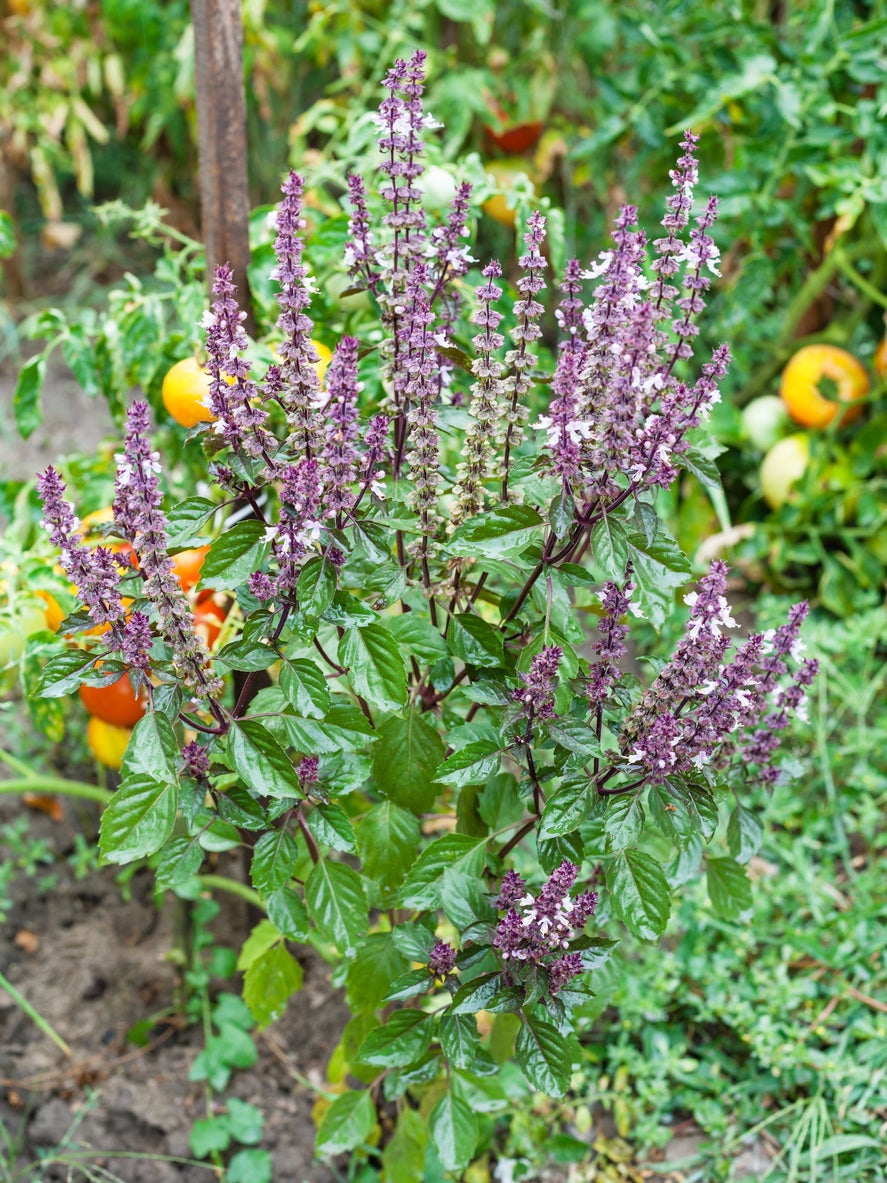What Is Queen Of Sheba Basil: How To Grow Queen Of Sheba Basil Herbs


Introduced in 2005, this aromatic, annual herb is growing in popularity and for reasons you might not think. This basil, Queen of Sheba, plant is ornamental and often scattered among annual flowers in various landscape beds. The fragrance and the long-lasting, dark purple flowers encourage growers to plant it near walkways and seating areas.
Ocimum basilicum ‘Queen of Sheba’ has a mild flavor and may be used in pesto sauces and other Italian type dishes where light, basil flavor combines with other herbs to create that unique taste. Harvest a good amount of leaves for drying before allowing the lovely flowers to grow. As with other herbs, flowering or allowing the plant to bolt often changes the taste.
Queen of Sheba Basil Care
Growing Queen of Sheba basil is easy and quite similar to growing other basil types. This herb is normally started from seed, but may also grow readily from cuttings or division if you have a plant that’s survived the winter. When learning how to grow Queen of Sheba basil, choose a sunny spot in the yard that will benefit from purple flowers later in the season.
You may grow Queen of Sheba basil as part of an herb garden or in an annual bed. To get it growing sooner, start seeds indoors four to six weeks before your last frost date. When early morning temperatures are consistently in the high 40's F. (4 C.), plant into the ground or outdoor container. This herb grows best in a light, well-draining soil. When combining with other annuals, locate it where their mature height won’t shade the basil plants.
Plant it near the front of the bed for your convenience, if desired. You can keep it at an attractive height with regular pruning. Other Queen of Sheba basil care includes monthly fertilization unless you’ve incorporated a long-acting, pelleted fertilizer into the bed. Keep an eye out for pests that may be attracted to new foliage growth, particularly aphids. If you see as warm of small bugs around new growth, blast them off with the water hose set as strong as the plant will allow.
Get a jump-start on aphid problems by growing nasturtiums in your beds. Plant them as soon as the weather allows. The attractive flowers of this plant are known as aphid traps, drawing the pests away from your other plantings. Queen of Sheba basil plant is said to attract wildlife, so surround these with repellent plants like lavender, dill, and chives.
Harvest from the top at first to develop an attractive, full plant. Pinch out flower buds until you’re ready to let the plants flower. You can then enjoy the attractive flowers.
Sign up for the Gardening Know How newsletter today and receive a free copy of our e-book "How to Grow Delicious Tomatoes".

Becca Badgett was a regular contributor to Gardening Know How for ten years. Co-author of the book How to Grow an EMERGENCY Garden, Becca specializes in succulent and cactus gardening.